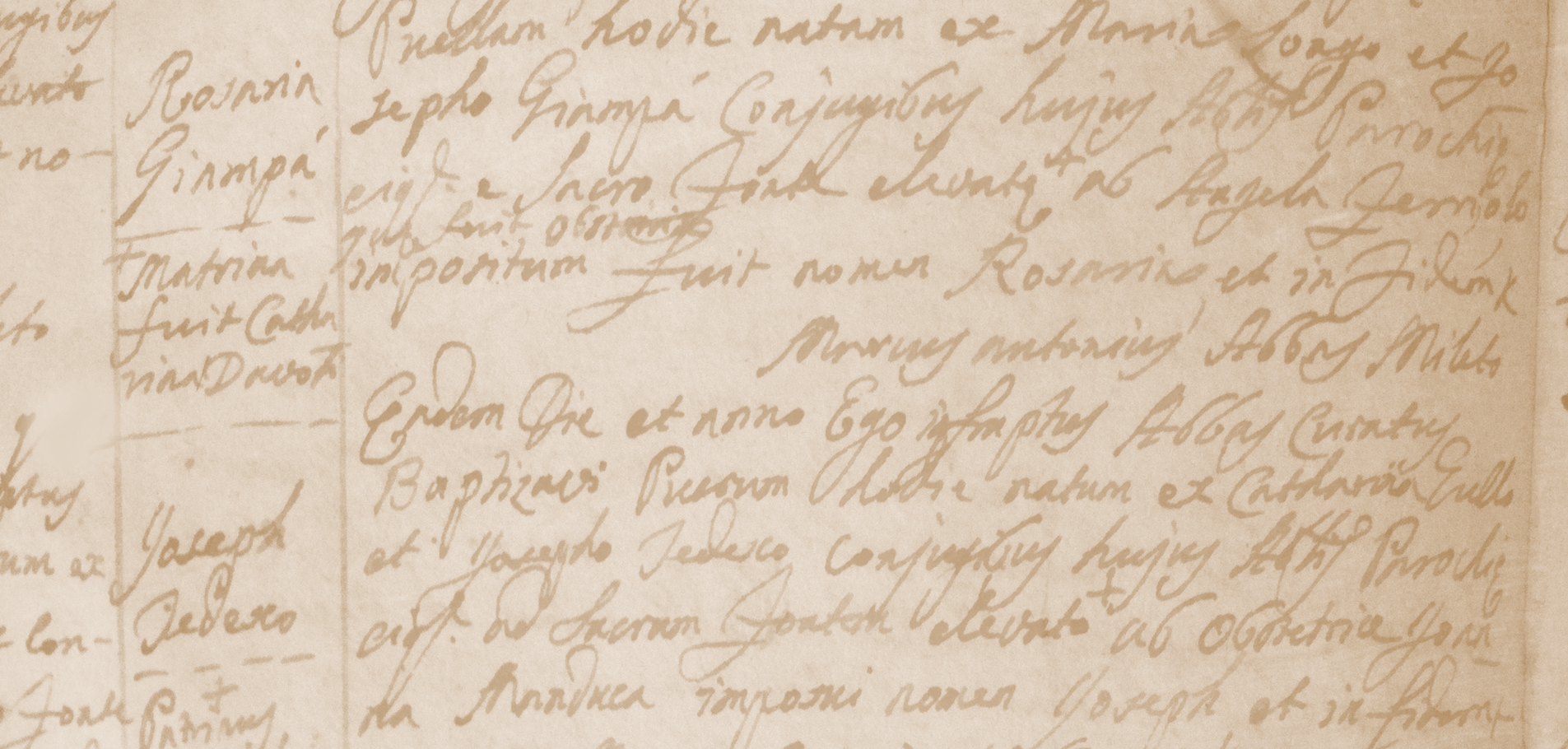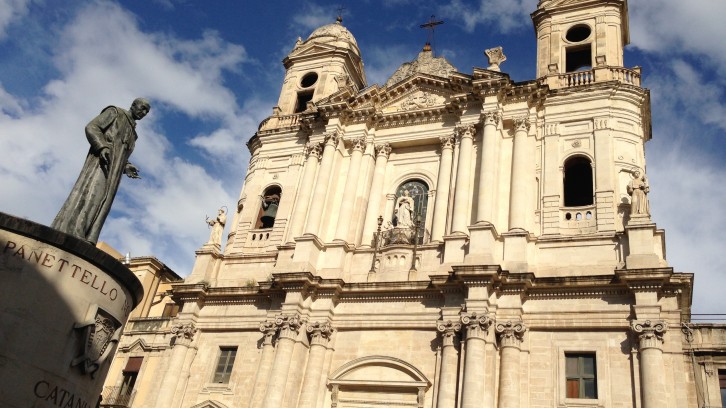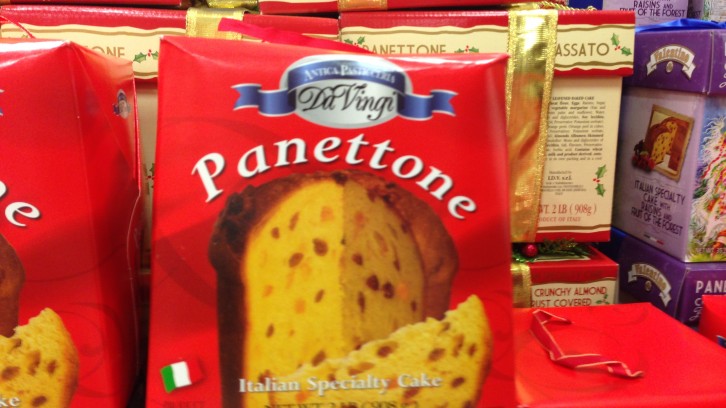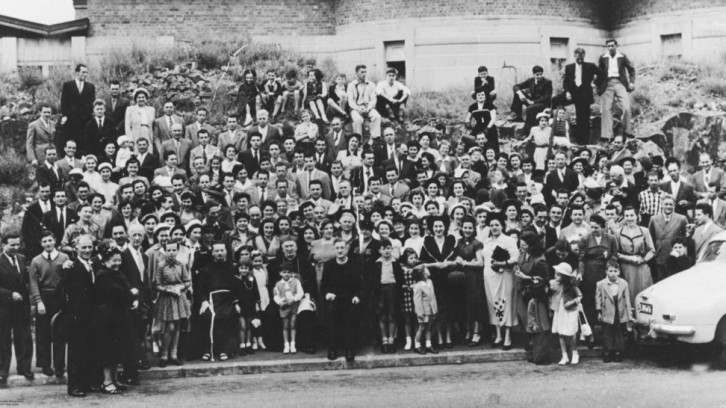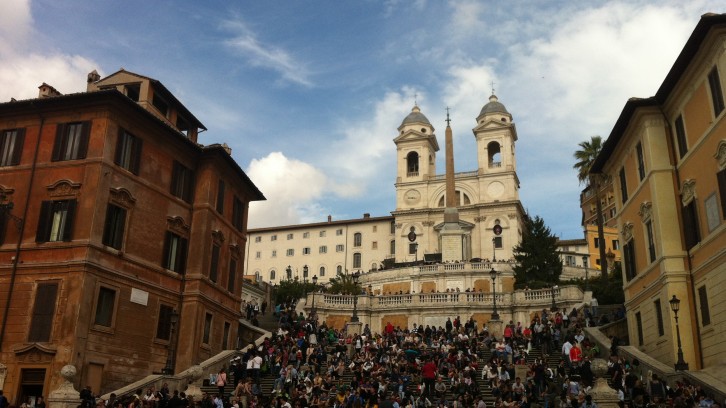(Click here to read “Retracing Noni’s Footsteps – Part 1”)
(Click here to read “Retracing Noni’s Footsteps – Part 2”)
Italian family history research is about remembering and researching the stories of generations who came before us. It has been honor to tell you my grandmother Noni’s story over the past several weeks. This is story of my Italian family. Noni has influenced me in many ways, especially in my desire to pursue Italian genealogy as a profession. I am motivated by the desire to continue to fill in the details of the lives of the ancestors Noni talks about. It is a sincere pleasure to do the same for my clients, and I treat their families with the respect and care that I do my own.
1945 in Italy was an eventful year for my grandparents, Loredana Stenech, “Noni” and Edward Tedesco, “Grampy.” World War II ended, they met, fell in love, and were married, all within a matter of a few months in the summer and fall of 1945. Their marriage meant that Noni would leave her life in Rome behind as well as her parents, grandparents, and other relatives. It was a bittersweet time, but Noni was young, in love, and ready for an adventure.
In early 1946, Grampy returned to America with other United States Army solders, temporarily leaving his new bride, Noni, back in Rome. Upon Grampy’s arrival at the family home in Woburn, Massachusetts, my great grandmother, “Nana” and Great-Aunt Caterina, “Aunt Kay,” began unpacking his suitcase. They found a framed photo of beautiful woman and immediately asked him, “Who is this? An Italian movie star?” Grinning broadly, he revealed, “That’s my wife, I’m married!”
“Sposatu? É fázu!” – “Married? That can’t be true!” Grampy recalls they animatedly exclaimed in Calabrese dialect. But it was true. Nana and Aunt Kay began crying out of both joy and surprise. After the shock wore off they explained that while Grampy was away they had arranged for him to date (with the intention of marrying) another girl who had also immigrated from San Pietro a Maida, Italy. It was not meant to be. Noni was his bride.
In April 1946, Noni would set foot on American soil for the first time in New York City. Her only previous impressions of America had been from classic American films staring Clark Gable, Cary Grant, and Katharine Hepburn. Noni vividly recalls gazing upon the Statue of Liberty for the first time as the boat entered New York harbor. Grampy was eagerly awaiting the arrival of his new bride on dock at the Port of New York.
Noni’s first meal in New York City was a steak dinner. “The steak was enormous. What was I going to do with all that food?” She recalled years later. The newlyweds stayed in New York for a few nights before heading to Woburn, Massachusetts where they would begin their new life together.
The view from the train on the way from New York City to Woburn did not exactly look like the “America” Noni had seen in the Clark Gable films. It was eye-opening. After a long journey, Noni and Grampy arrived at the Tedesco family home on Main Street in Woburn, Massachusetts. The house was painted brown, had a sloping shingled roof and a small backyard. The bottom floor was my great-grandfather’s barbershop and the front window was aptly labeled “Joe Tedesco, Barber.” It was a modest and loving home and was comprised of three bedrooms, a small living room, a kitchen and one bathroom. There were a total of 9 family members (including Noni and Grampy) living in that small home in 1946.
Immediately, there were communication issues in the household. Noni could not understand a word her in-laws were saying in the early 1900’s era Calabrese dialect they spoke. Living in Rome, Noni had no previous exposure to dialects from southern Italy. Calabrese was incomprehensible to her. Grampy served as a translator for his new wife until she slowly began to understand Calabrese. Noni recalls an early argument with her in-laws regarding who was actually speaking “real” Italian. Each party insisted they were speaking Italian, although the Tedesco’s knew they were actually speaking Calabrese dialect!
The transition to American life was extremely difficult for Noni. During the first year she cried every night and longed to go back to Italy. In early 1947, the birth of her first child, my Aunt Linda, would cement Noni’s connection to America forever. Still convinced she had made a mistake in immigrating to the USA, she retuned to Italy for a visit in 1948. She found that everything had changed with regard her previous life. Her dearest friends had gotten married; and a few of them had immigrated to other parts of the USA or Argentina. Her Aunt Amilda Pellegrini from Piombino, Tuscany married a Sicilian-American after WWII and moved to Queens, New York. Her former world in Italy had changed. She realized she could not go back. Noni then returned to America with a renewed commitment to her husband Grampy and her growing family. She never looked back again.
Noni and Grampy would go on to have 8 children, 7 of whom survived to adulthood. Noni became a United States Citizen 6 months after my father’s birth, thus giving my family and me the opportunity to become Italian Dual Citizens. (Thanks Noni!). Grampy utilized the G.I. Bill to attend college. He graduated with a Bachelor of Science from Boston College and went on to continue his studies for several years at Harvard University. Grampy started his own business in 1954, becoming the second generation of Tedesco entrepreneurs in the United States. That would make me a very proud second generation Italian-American and a fourth generation entrepreneur.
Noni and Grampy raised a beautiful family of 7 children and 7 grandchildren. They live very happily to this day in Gloucester, Massachusetts. I am so thankful for them and their influence on me. There is absolutely no way, I would be an Italian genealogist without them!
-Mary M. Tedesco, ORIGINS ITALY.
This blog post is dedicated in loving memory of my beautiful Aunt Mary Tedesco Stiglich who lost her battle with cancer in 2005. Long before I began doing Italian genealogy, she was the keeper of the family stories. I miss you Aunt Mimi!
